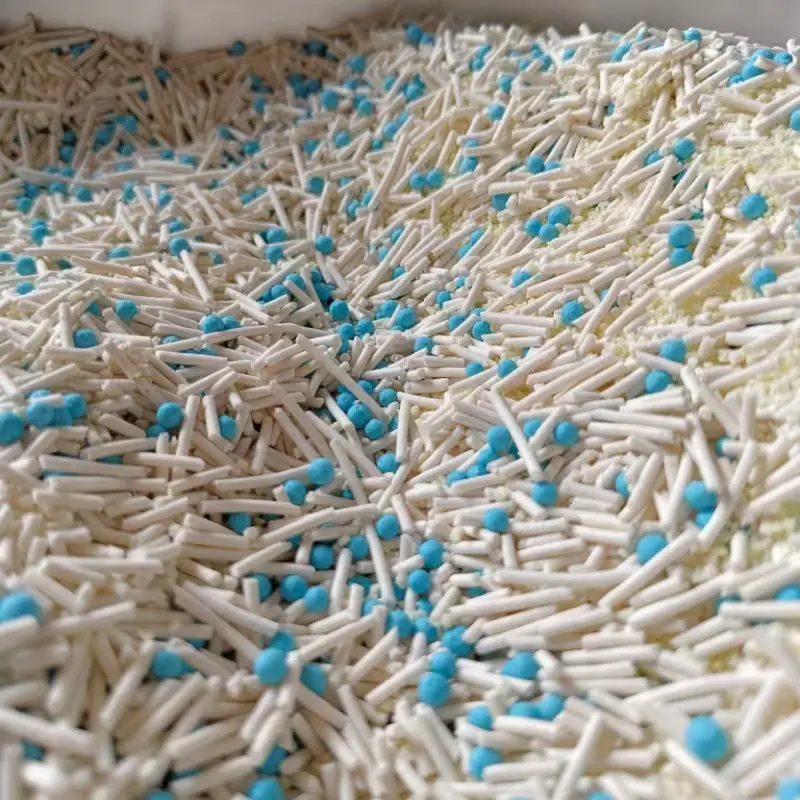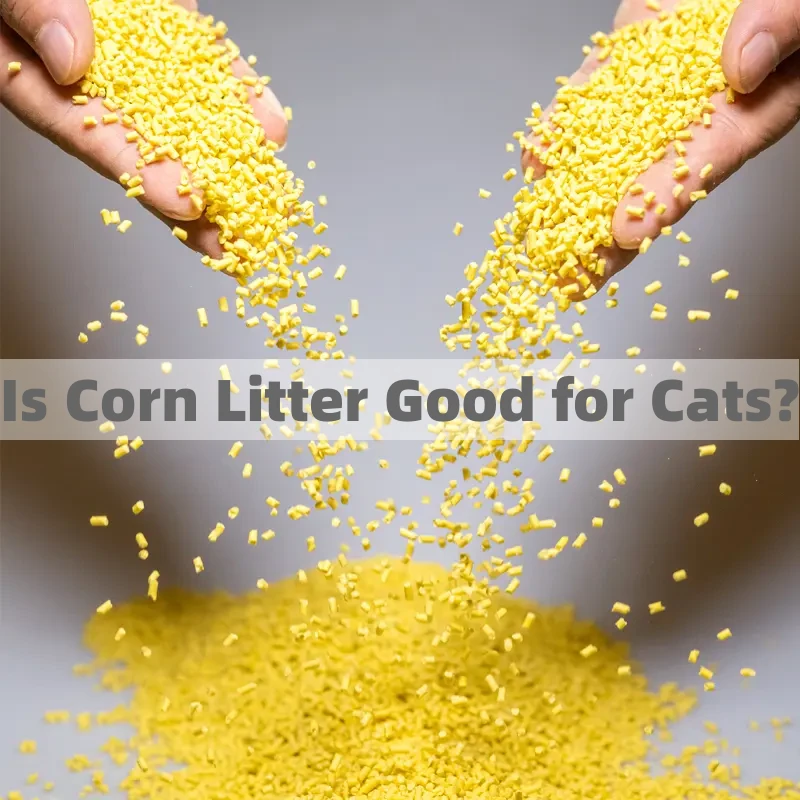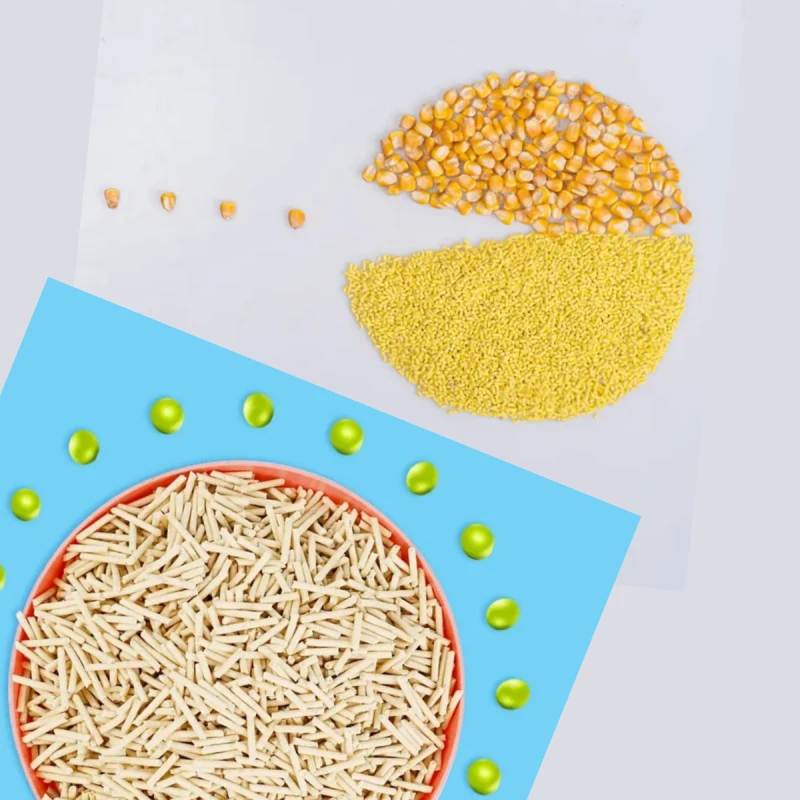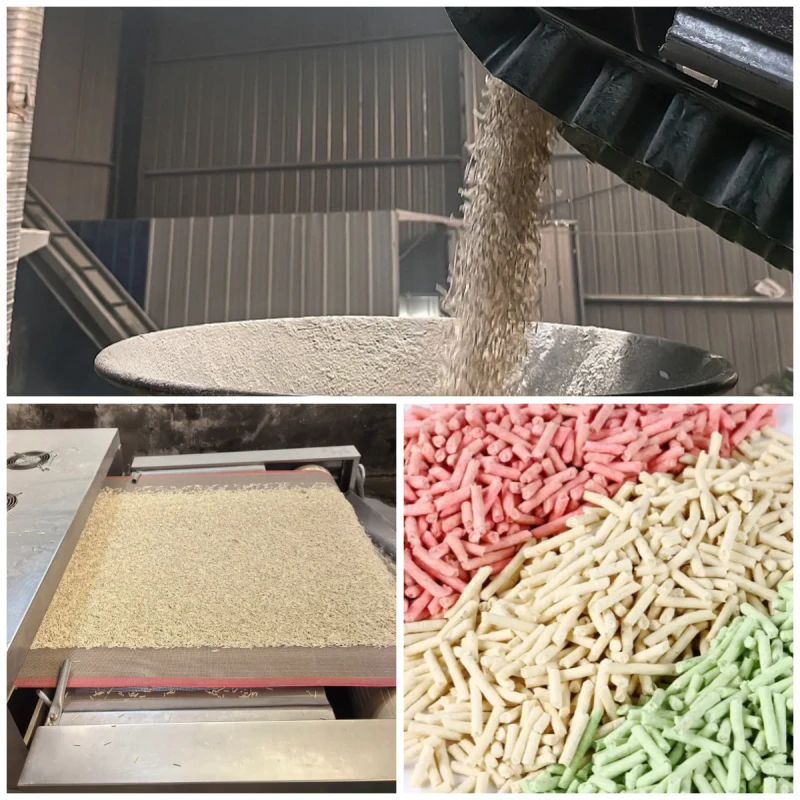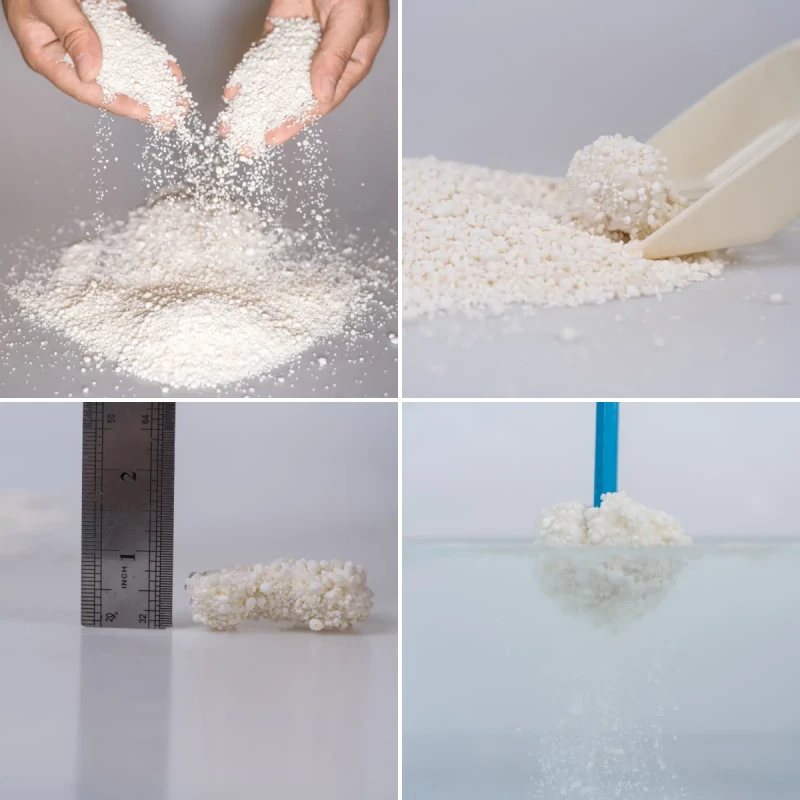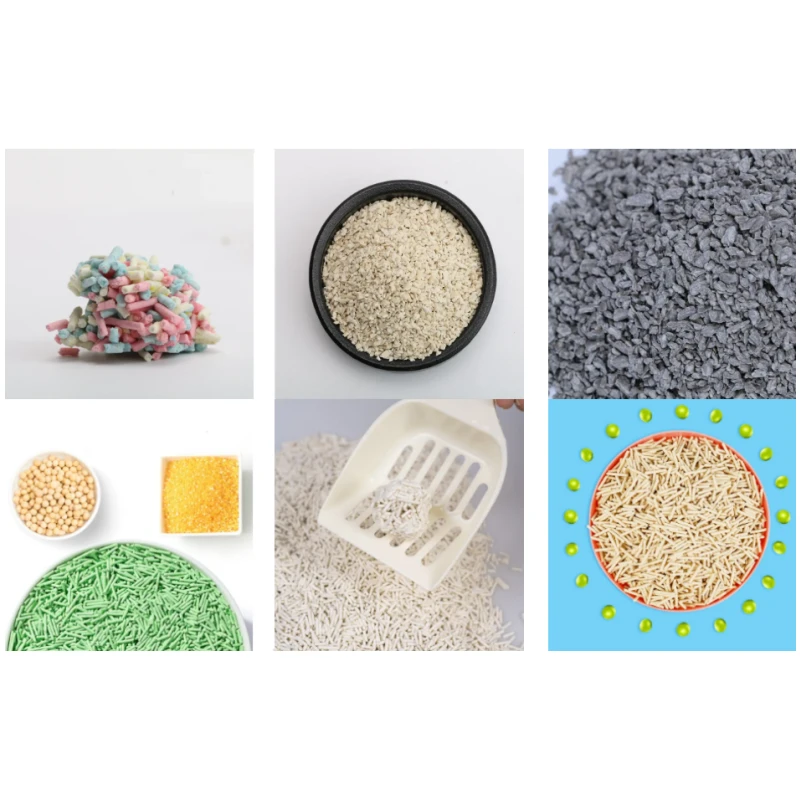Why do your cat litter smell bad?
If your cat litter smells bad, it could be due to several factors that affect the cleanliness and freshness of the litter box. Understanding the reasons behind the unpleasant odors can help you take steps to maintain a cleaner, odor-free environment for both you and your cat.
Here are the main reasons why your cat litter may smell bad:
1. Infrequent Scooping
One of the most common reasons for a smelly litter box is infrequent scooping. If cat waste is left in the litter box for too long, it will start to emit strong odors, particularly from the ammonia in cat urine. The longer the waste sits, the more the smell intensifies.
Solution: Scoop the litter box at least once or twice a day to remove clumps of urine and feces. Regular scooping prevents waste buildup, helping keep odors under control.
2. Old or Saturated Litter
Over time, cat litter becomes saturated with urine and loses its ability to absorb moisture and control odors effectively. Even if you scoop regularly, if the litter itself has reached its limit, it won’t be able to neutralize odors.
Solution: Completely replace the litter once a week (or more frequently if needed). Refreshing the litter ensures that it retains its absorbent properties and continues to control odors.
3. Dirty Litter Box
Even with regular scooping, if the litter box itself is dirty, it can start to absorb odors and contribute to the smell. Urine and feces can seep into the plastic, especially if the litter box is scratched or worn.
Solution: Clean the entire litter box with mild soap and water at least once a week. Avoid using harsh chemicals that could be harmful to your cat, and make sure to dry the box thoroughly before adding fresh litter.
4. Poor-Quality Litter
Some cat litters are less effective at controlling odors than others. Low-quality litters may not clump properly or absorb moisture well, leading to lingering smells. Additionally, non-clumping litters may require more frequent changes to avoid odor buildup.
Solution: Choose a high-quality, clumping litter that is designed to control odors. Look for litters that contain baking soda, activated charcoal, or silica gel for better odor absorption.
5. Inadequate Litter Depth
If you don’t add enough litter to the box, there won’t be enough material to effectively absorb moisture and cover waste. This can lead to urine pooling at the bottom of the box and causing odors.
Solution: Make sure to add at least 2-3 inches of litter to the box. This allows the litter to fully absorb urine and help cover waste, reducing smells.
6. Cat’s Diet
A cat’s diet plays a significant role in the smell of their waste. Cats that eat low-quality food, especially food with fillers or a lot of by-products, may produce waste that smells more pungent.
Solution: Consider switching to a higher-quality cat food, ideally grain-free or with natural ingredients. Healthier food may result in less odorous waste, which can help keep the litter box area smelling fresher.
7. Litter Box Location
The location of the litter box can affect how well odors are contained. If the litter box is placed in a small, enclosed area with poor ventilation, smells can become trapped and intensify.
Solution: Place the litter box in a well-ventilated area where fresh air can circulate. Good airflow helps reduce odor buildup and makes the space more pleasant.
8. Multiple Cats and Litter Boxes
If you have multiple cats but only one litter box, odors can accumulate faster because the box is used more frequently. Cats also prefer having their own space, and too few litter boxes can lead to stress or improper usage.
Solution: The general rule is to have one litter box per cat, plus one extra. This ensures that each cat has a clean box to use, reducing the likelihood of odor buildup.
9. Health Issues in Your Cat
Sometimes, a strong odor from the litter box can be a sign of a health issue in your cat. For example, urinary tract infections, kidney problems, or digestive issues can cause your cat’s waste to smell unusually strong.
Solution: If the litter box odor is unusually bad and persists despite regular cleaning, consider taking your cat to the vet for a check-up to rule out any health problems.
10. Improper Litter Box Size
If the litter box is too small for your cat, they may not have enough room to properly bury their waste, leading to stronger smells. Larger cats may need more space to comfortably use the litter box.
Solution: Choose a litter box that is appropriately sized for your cat. Ideally, the box should be at least 1.5 times the length of your cat, allowing them plenty of room to move and cover their waste.
Conclusion
A smelly litter box is usually a result of infrequent scooping, old litter, or poor-quality products. By ensuring regular cleaning, choosing high-quality litter, and maintaining proper hygiene practices, you can significantly reduce odors and create a cleaner, more pleasant environment for both you and your cat. Additionally, monitoring your cat's health and diet can help prevent any underlying issues that may be contributing to stronger odors.
511070.webp)
"The tight clumps also can help to cover the odors and the unpleasant odors are covered by the cat litters"
How to make cat litter not smell?
To keep your cat litter from smelling, you need to follow a combination of regular cleaning, proper maintenance, and using odor-control products. A well-maintained litter box not only reduces unpleasant odors but also ensures your cat has a clean and comfortable environment. Here are some practical tips to make your cat litter not smell:
1. Scoop the Litter Box Daily
Why it works: Removing waste as soon as possible helps prevent the buildup of odors. Feces and urine sitting in the litter box are the primary sources of bad smells.
How to do it: Scoop the litter at least once or twice a day to remove solid waste and clumped urine. This keeps the litter cleaner for longer and minimizes odor.
2. Choose High-Quality Odor-Control Cat Litter
Why it works: Certain litters are specifically designed for odor control, and choosing the right one can make a big difference.
What to look for:
Clumping Litter: Clumping litter locks in moisture and forms hard clumps, which are easier to remove, thus preventing odors from lingering.
Activated Charcoal/Baking Soda: Some cat litters contain activated charcoal or baking soda, which naturally absorb and neutralize smells.
Silica Gel Litter: Silica gel cat litter absorbs liquid and traps odors, keeping the litter box dry and smell-free for longer.
3. Add Baking Soda for Extra Odor Control
Why it works: Baking soda is a natural deodorizer that can help neutralize acidic smells from cat urine.
How to do it: Sprinkle a thin layer of baking soda at the bottom of the litter box before adding the litter. You can also mix a small amount into the litter for ongoing odor control.
4. Clean the Litter Box Regularly
Why it works: Even with regular scooping, the litter box itself can absorb odors over time, especially if it’s not cleaned thoroughly.
How to do it:
Empty the entire box and wash it with mild soap and water at least once a week.
Rinse thoroughly and let it dry completely before refilling it with fresh litter.
Avoid using strong chemicals that may leave residual smells or deter your cat from using the box.
5. Replace the Litter Regularly
Why it works: Over time, even the best cat litter can become saturated with waste and lose its ability to control odors.
How to do it: Replace all the litter in the box at least once a week or more often if necessary. If you have multiple cats, you may need to change the litter more frequently to keep odors at bay.
6. Use an Enclosed Litter Box
Why it works: Enclosed or hooded litter boxes can help contain odors inside the box, preventing them from spreading throughout the room.
What to consider: Make sure the box is well-ventilated, and clean it regularly to prevent smells from building up inside.
7. Consider a Self-Cleaning Litter Box
Why it works: Self-cleaning litter boxes automatically remove waste after your cat uses the box, keeping the litter clean and odor-free.
How to do it: These boxes can be an excellent investment for multi-cat households or for owners who prefer less manual scooping.
8. Ventilate the Litter Box Area
Why it works: Poor ventilation can trap odors in a room, making the smell stronger. Fresh air circulation helps reduce bad odors.
How to do it: Place the litter box in a well-ventilated area where fresh air can circulate. You can also use an air purifier or a small fan to help with ventilation.
9. Use Litter Box Liners with Odor Control
Why it works: Litter box liners make cleaning easier and prevent urine from soaking into the litter box itself, reducing smells.
How to do it: Use heavy-duty liners that are resistant to tearing, and replace them whenever you clean the box. Some liners come with built-in odor control, such as baking soda.
10. Monitor Your Cat’s Diet
Why it works: What your cat eats can influence the smell of their waste. Low-quality food can lead to more pungent odors.
How to do it: Consider switching to a high-quality cat food with fewer fillers and additives. Cats on a balanced, protein-rich diet typically produce less odorous waste.
11. Place a Deodorizer Near the Litter Box
Why it works: Deodorizers can help reduce the overall smell in the area surrounding the litter box.
How to do it: Place a natural air freshener or a deodorizing gel near the litter box to help absorb any lingering odors. Make sure it’s placed far enough away that it doesn’t interfere with your cat’s use of the litter box.
12. Use Multiple Litter Boxes for Multiple Cats
Why it works: If you have multiple cats using one litter box, it can become overwhelmed quickly and start to smell.
How to do it: The general rule is to have one litter box per cat, plus one extra. This ensures that waste is spread out across multiple boxes, reducing odor buildup.
13. Address Any Health Issues
Why it works: If your cat has a health issue like a urinary tract infection (UTI) or digestive problems, their waste may smell stronger than usual.
How to do it: If you notice that your cat’s waste suddenly smells much worse than usual, it’s a good idea to consult your vet to rule out any underlying health issues.
Conclusion
Keeping your cat litter from smelling requires regular maintenance, choosing the right litter, and creating a clean, well-ventilated environment. By scooping frequently, cleaning the litter box regularly, using odor-control products like baking soda, and ensuring your cat is eating a balanced diet, you can effectively minimize odors and maintain a fresh-smelling home.
With these practical tips, you can keep your litter box odor-free and create a more pleasant environment for both you and your cat.
By following these steps, you can effectively manage and reduce odors in your cat's litter box, creating a more pleasant environment for both you and your feline companion.But the most important one is choosing a good quality cat litter.Our plant-based cat litter have a good performance in odor-control, if you want to try,please contact our sales dept.
If you are a cat litter factory, how do you make the cat litter you manufacture odorless?
How to Make Odorless Cat Litter
Odorless cat litter is a product that many cat owners seek to maintain a fresh and clean environment without harsh fragrances or chemicals. Creating odorless cat litter from natural materials such as tofu, corn, or grains involves a few key ingredients and specific manufacturing steps that ensure the litter is effective at absorbing moisture, clumping, and controlling odors without added scents.
Materials needed:
Clay or natural ingredients: Choose high-quality clay or natural materials such as tofu, wood, paper, corn, or wheat, which have excellent absorbent properties.
Odor neutralizers: Add substances like baking soda, activated charcoal, or natural plant ingredients known for their ability to absorb odors.
Unscented ingredients: Avoid added artificial flavors or scents, which may mask odors but may irritate sensitive noses.
Here’s a step-by-step guide on how to make odorless cat litter using tofu, corn, and grain-based materials.
1. Tofu Cat Litter: Odorless Formula and Manufacturing Process
Tofu cat litter is a natural and eco-friendly option made from the by-products of soybeans. It is highly absorbent, clumps well, and is biodegradable.
Ingredients and Formula:
Main Ingredient: Soybean residue (also called tofu dregs or okara)
Binder: Natural starch (e.g., corn starch)
Additive (Optional): Small amounts of baking soda or charcoal powder for enhanced odor control without fragrance
Water: Used during the mixing process to bind the ingredients
Manufacturing Process:
Raw Material Collection:
Collect soybean residue, a by-product from tofu production. This material is often considered waste, but it can be dried and repurposed for cat litter.
Drying and Grinding:
The soybean residue is dried in large industrial dryers to remove moisture. Once dry, it is ground into a fine powder to create a uniform base for the litter.
Mixing:
The ground soybean residue is mixed with a binder (such as corn starch) to help the particles stick together. Water is added to form a dough-like mixture. At this stage, optional additives like baking soda or charcoal powder can be mixed in for odor control.
Extrusion and Shaping:
The mixture is passed through an extrusion machine, which shapes the tofu litter into small, uniform pellets or crushed shapes. The extruded tofu pieces are designed to clump when wet and prevent tracking.
Drying:
The pellets are then dried again to remove any remaining moisture and ensure the litter is firm and absorbent.
Sifting:
The finished product is sifted to remove dust and ensure that the litter particles are uniform in size.
Packaging:
The odorless tofu litter is packaged in sealed, moisture-proof bags, ready for sale.
2. Corn Cat Litter: Odorless Formula and Manufacturing Process
Corn-based cat litter is made from processed corn kernels and is known for its lightweight properties and excellent odor absorption.
Ingredients and Formula:
Main Ingredient: Ground corn kernels (dried)
Binder: Natural corn starch or wheat gluten
Additive (Optional): Baking soda or natural odor-neutralizers like zeolite (if stronger odor control is needed without fragrance)
Water: Used to bind the mixture
Manufacturing Process:
Grinding Corn:
Corn kernels are collected and ground into small particles or granules. The corn is dried first to remove excess moisture, ensuring it can absorb liquids efficiently when used as litter.
Mixing and Binding:
The ground corn particles are mixed with a binder such as corn starch to help them stick together during the production process. The addition of baking soda or natural additives can help neutralize odors. Water is added to moisten the mixture.
Shaping via Extrusion:
The mixture is passed through an extruder that shapes the corn particles into pellets or granules. These shapes will help absorb urine and form clumps when wet.
Drying and Sieving:
The formed pellets are dried to ensure they are moisture-free and hardened. Once dry, the litter is sieved to remove any dust or small particles.
Packaging:
The corn cat litter is packaged in bags designed to keep moisture out, ready for sale as an odorless product.
3. Grain-Based Cat Litter: Odorless Formula and Manufacturing Process
Grain-based cat litter can be made from a variety of grains like wheat, barley, or a mixture of both. This type of litter is biodegradable and offers strong clumping properties.
Ingredients and Formula:
Main Ingredient: Ground wheat, barley, or other grains
Binder: Corn starch or wheat gluten
Additive (Optional): Baking soda or activated charcoal
Water: Used to create a cohesive mixture
Manufacturing Process:
Grain Collection and Grinding:
Grains such as wheat or barley are collected and ground into fine particles. The grains are dried to remove moisture, which enhances their ability to absorb liquids later on.
Mixing with Binder:
The ground grains are mixed with corn starch or wheat gluten to act as a binder. Small amounts of baking soda or charcoal may be added for additional odor control. The mixture is moistened with water to help bind the particles.
Shaping and Extruding:
The mixture is extruded through a pelletizing machine, creating small, uniform granules or pellets. These pellets are designed to clump when exposed to moisture.
Drying:
The pellets are dried in large industrial dryers to ensure that they are moisture-free and ready to absorb cat urine. Drying also helps the litter last longer in the box.
Sifting and Packaging:
The dried litter is sifted to remove dust, ensuring a clean, odorless product. The final product is then packaged in bags that protect it from moisture, making it ready for sale.
Final Tips for Making Odorless Cat Litter
Choose Natural Additives: If you want to enhance the odor control of your cat litter, use natural additives like baking soda, activated charcoal, or zeolite. These ingredients absorb and neutralize smells without adding artificial fragrances.
Ensure Proper Drying: Adequate drying is critical to making odorless cat litter. Moisture in the final product can lead to bacterial growth and bad odors. Industrial dryers or kilns are often used to ensure that the litter is completely dry.
Dust Removal: One of the biggest complaints with cat litter is dust. To make truly odorless and dust-free cat litter, ensure that the product is well-sifted to remove fine particles that can cause dust clouds when the cat uses the box.
Additional Features for Product Differentiation
Scent-Free Additives: To maintain the "odorless" aspect, avoid adding artificial fragrances. However, you can offer optional odor-neutralizing features like activated charcoal or green tea extracts that won’t add a noticeable scent but will enhance odor control.
Clumping Variants: You can manufacture clumping and non-clumping versions of odorless litter to cater to different market preferences.
Eco-Friendly Packaging: Offer sustainable packaging options, such as biodegradable Kraft paper bags, to appeal to environmentally conscious consumers.
Commercial Supply and Distribution
After manufacturing, you'll need to distribute the odorless cat litter effectively:
Direct Sales to Retailers:
Sell directly to pet stores, supermarkets, or large retailers like Walmart or Target.
Offer bulk purchasing discounts or wholesale pricing for larger orders.
Online Sales:
Set up distribution through online platforms like Amazon, Chewy, or your own e-commerce website. Offer competitive shipping rates or subscription services for cat litter delivery.
OEM/Private Labeling:
Partner with retailers to offer OEM services. Allow retailers to rebrand your odorless cat litter as their own product. This can help you expand your market reach without needing to build brand recognition yourself.
Marketing Strategies:
Highlight the odor-control properties, natural ingredients, and environmental benefits of your litter in marketing materials.
Engage with pet influencers and cat communities to build brand awareness through social media platforms.
Conclusion
Making odorless cat litter involves selecting the right base materials (such as tofu, clay, or silica gel), adding natural odor-neutralizing agents like baking soda or activated charcoal, and carefully controlling the manufacturing process to produce an effective, eco-friendly product. By following the proper formulation and manufacturing steps, you can create a high-quality product that cat owners will appreciate for its odor control, safety, and ease of use.
With the right manufacturing setup, supply chain, and distribution strategy, odorless cat litter can become a valuable and sought-after product in the pet care market.
Making odorless cat litter from tofu, corn, or grains involves selecting the right natural ingredients, ensuring effective binding, and following proper manufacturing processes like drying, sifting, and packaging. By using natural deodorizers like baking soda or activated charcoal, you can create an eco-friendly, odorless cat litter that offers excellent absorption and clumping properties. Whether you're creating tofu cat litter, corn cat litter, or grain-based cat litter, following these processes will result in a high-quality product that keeps the litter box fresh without the need for added fragrances or chemicals.
Having cat litter that doesn't emit odors provides numerous benefits, including a fresher and cleaner living space, improved cat health and behavior, and increased satisfaction for both cats and their owners.
If the cat litter you purchase has no smell, or does not have a bad smell, then your cat litter business will grow bigger and bigger. Outperform your peers and gain greater profits.

387.webp)
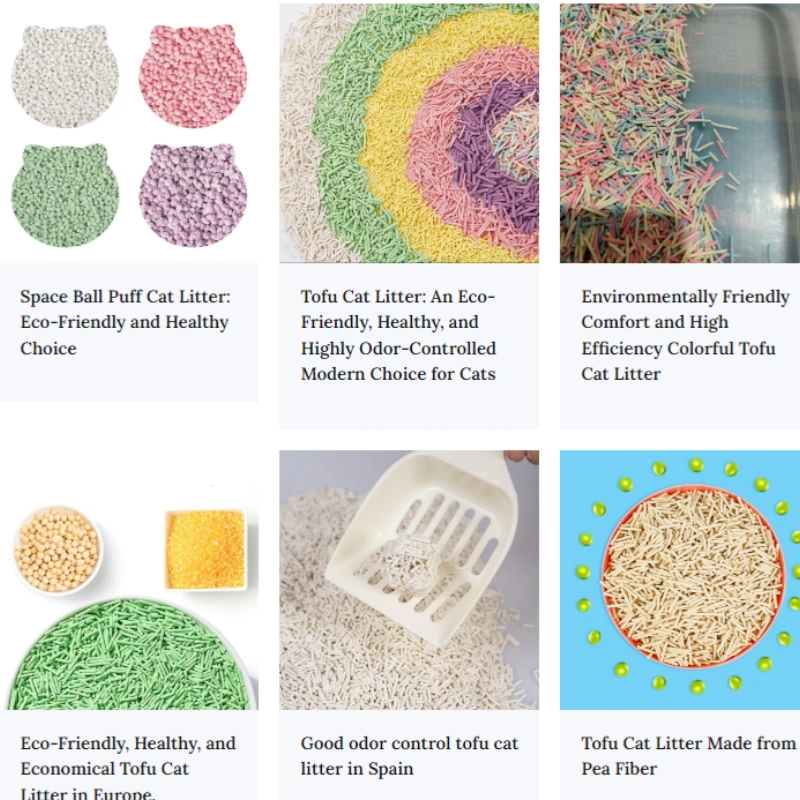
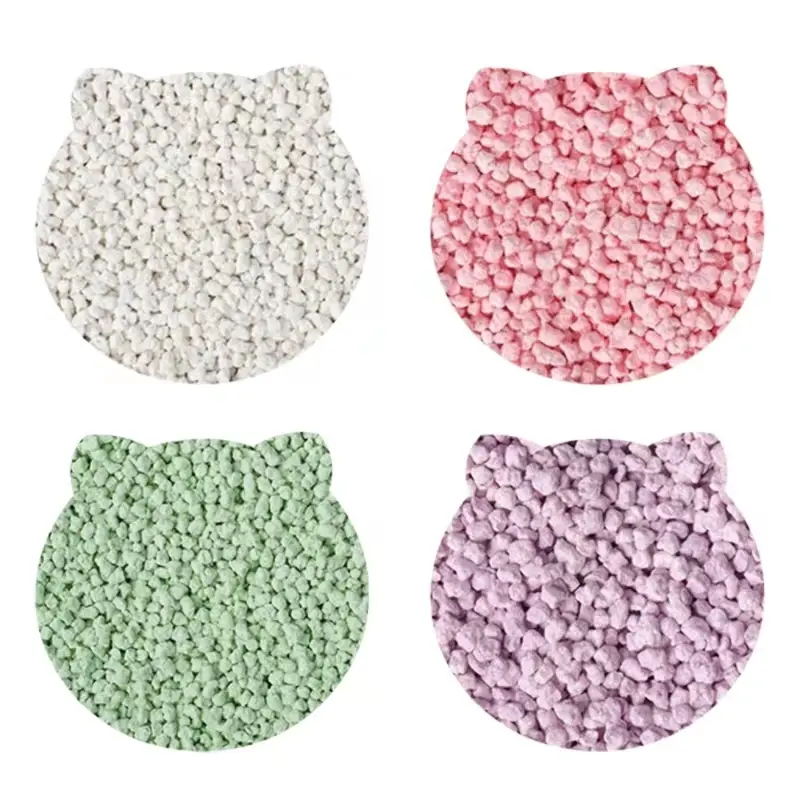
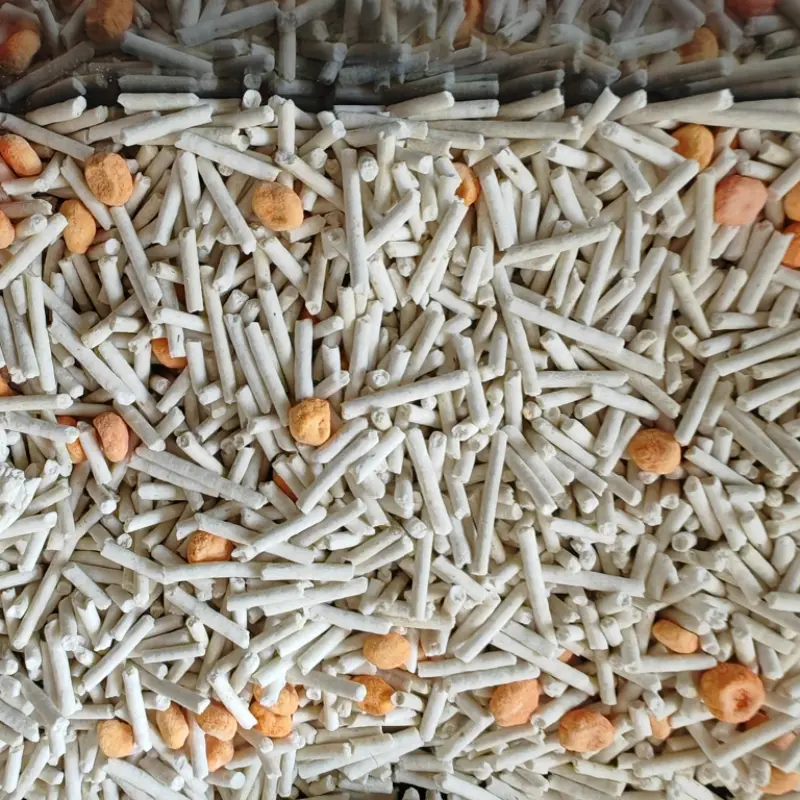
122.webp)
